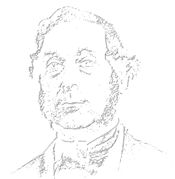by John Beauchamp Jones
MARCH 10TH.—Raining fast all day.
There was a rumor to-day that the enemy were approaching again, but the Secretary knew nothing of it.
Major Griswold is at variance with Gen. Winder, who has relieved him as Provost Marshal, and ordered him to Americus, Ga., to be second in command of the prisons, and assigned Major Carrington to duty as Provost Marshal here. Major Griswold makes a pathetic appeal to the President to be allowed to stay here in his old office.
The following, from the Dispatch, differs from the Examiner’s account of the disposal of Col. Dahlgren’s body:
“Col. Dahlgren’s Body.—On Sunday afternoon last, the body of Col. Ulric Dahlgren, one of the leaders of the late Yankee raid on this city, and on whose body the paper revealing their designs, if successful, were found, was brought to this city on the York River Railroad train, and remained in the car (baggage) in which it was till yesterday afternoon, when it was transferred to some retired burial place. The object in bringing Dahlgren’s body here was for identification, and was visited, among others, by Captain Dement and Mr. Mountcastle, of this city, who were recently captured and taken around by the raiders. These gentlemen readily recognized it as that of the leader of the band sent to assassinate the President and burn the city. The appearance of the corpse yesterday was decidedly more genteel than could be expected, considering the length of time he has been dead. He was laid in a plain white pine coffin, with flat top, and was dressed in a clean, coarse white cotton shirt, dark blue pants, and enveloped in a dark military blanket. In stature he was about five feet ten inches high, with a long, cadaverous face, light hair, slight beard, closely shaven, and had a small goatee, very light in color. In age we suppose he was about thirty years, and the expression of his countenance indicated that of pain.”



